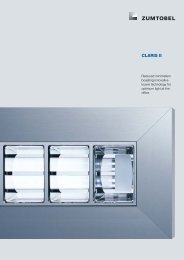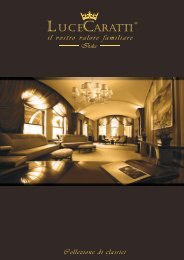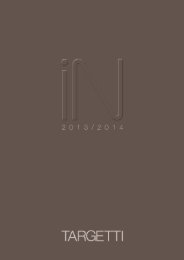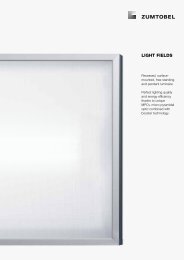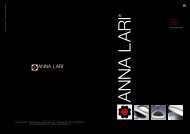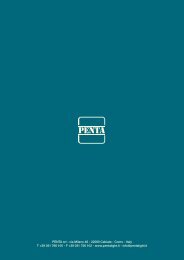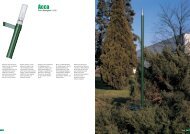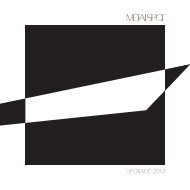miros - Zumtobel
miros - Zumtobel
miros - Zumtobel
You also want an ePaper? Increase the reach of your titles
YUMPU automatically turns print PDFs into web optimized ePapers that Google loves.
MIROS designDistance between projectorand mirrorSizing an installation“Spill”, is the term used to describe the proportion of the luminousflux produced by the projector that fails to hit the reflector. Thisquantity must be optimised depending on the emphasis of thelighting concept. Efforts must be made to achieve a minimum levelfor maximum system efficiency in terms of illuminating the workingplane, whereas a useful spill component must be defined for formal,creative aspects (ceiling appearance or indirect light in the room).Note: The diagrams below can be used to look up the percentage of excessive irradiation of the reflector produced by the light conefrom the projector. This is shown below for three different reflector sizes (Ø 500/600/800 mm) for mirrors that are inclined at two anglesrelative to the projector (0° and 40°). Starting from a selected distance between the projector and the reflector and the correspondingreflector characteristic in the diagram, users can read off the relevant excessive irradiation component on the vertical axis in the followingdiagrams.OSRAM HALOSTAR QT 24 V 150 W (halogen lamp)Projector efficiency: 51 %, 3,200 lmAdvantages: best possible colour rendition properties,straightforward dimming, narrow-beam projector characteristicdue to compact axial filament.Restrictions: lower luminous efficiency, (21 lm/W comparedwith 85–93 lm/W using HIT lamps), shorter servicelife (2,000 h)1/10 angle of diffusion of projector 2 x 7°BLV HIT 150 W G12 axial (lamp with quartz dischargetube)Projector efficiency: 47 %, 13,000 lmAdvantages: long service life, high luminous efficiency,narrower beam characteristic compared with lampswith ceramic discharge tube, highly constant luminousflux after start-up phase, good colour rendition.Restrictions: only available from BLV, possible colourscattering and colour drift, significant earlis drop inluminous flux due to NaSc technology, 1/10 angle ofdiffusion of projector 2 x 5.5°OSRAM HQI-T 150/PRO W (lamp with quartzdischarge tube)Projector efficiency: 48 %, 12,500 lmAdvantages: long service life (9,000 h)Restrictions: possible colour scattering and colourdrift, 1/10 angle of diffusion of projector 2 x 5°GE CMH 150/T W (lamp with ceramic discharge tube)Projector efficiency: 48 %, 14,000 lmAdvantages: extremely long service life (10-15,000 h),extremely low colour scattering, excellent colour stability,extremely high luminous efficiencyRestrictions: more wide-angle projector characteristiccompared with lamps with quartz discharge tube,1/10 angle of diffusion of projector 2 x 7°



